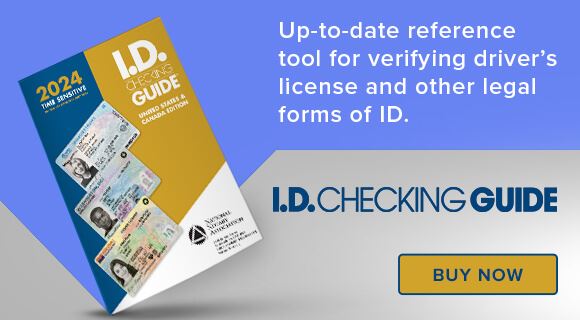Updated 5-28-24. A Notary’s duties include identifying a signer — but how should Notaries check a signer’s ID for clues if it is genuine or not? Ask the signer to hand you their identification and then follow these 5 simple steps to check their ID properly:
5 steps for Notaries checking IDs
There are 5 simple steps to follow when checking any ID every time you perform a notarization. First, ask the signer to hand you the ID so you can inspect it.
- Look at the photo on the ID and then look at the signer. Then do it again. Make sure the image and physical description reasonably match the signer.
- Check the expiration date.
- Ensure all informational elements on the ID are present — both front and back.
- Use the blue light and magnifying glass to check the ID’s security features.
- Have the individual sign your journal so that you can compare the signature in the journal with the one on the ID. Like the photograph and physical description, check the signatures to see if they are reasonably similar.
All these steps should take less than a minute. The time will be well spent. Most signers will appreciate your efforts to protect them and their transactions from forgery. You will also go a long way toward protecting yourself against claims.
Know your state’s identification cards and rules
To become effective at verifying a person’s ID, we recommend getting to know your state’s IDs and U.S. passports because these are the IDs you’ll encounter most often. Become familiar with their security features: micro-printing, “ghost” photos, holograms, swipe stripes, barcodes and raised lettering (such as the raised date of birth found on Texas driver’s license photos). Learn the informational elements of your common state IDs, such as name, address, issue and expiration dates, on both the front and back of the ID and know where they are placed.
Also, be sure to check for changes to your state’s ID rules on a regular basis. In 2017, Florida added a veterans health ID card to the list of identification documents Florida Notaries may accept from a signer.
California accepts consular and tribal IDs that are current or issued within the past 5 years, have a serial or identification number, and contain the signature, photograph and description of the individual to its list of acceptable IDs.
Since 2018, Arizona Notaries can accept as proof of a signer’s identity a nonoperating ID license and an inmate identification card issued by the Arizona Department of Corrections if the inmate is in the custody of ADC. Arizona Notaries may also now accept any form of inmate ID issued by the Federal Bureau of Prisons if the inmate is in federal custody.
In addition, Arizona Notaries may accept a form of an unexpired government ID issued by the U.S., a state or a tribal government to an individual that contains the signature or a photograph and physical description of the individual and that is satisfactory to the Notary.
Handy Resources
A small ultraviolet light or blue light and magnifying glass can be a helpful tool. The blue light will show hidden ID security features like holograms and ghost photos. The magnifying glass will help you spot micro-printing on the ID. Use these tools in front of the signer to show you’re serious about what you’re doing.
Bill Anderson is Vice President of Government Affairs with the National Notary Association


Related Articles:
Notary guidelines for accepting or rejecting a signer’s ID
A Notary’s guide to spotting fake IDs
Is an expired ID acceptable for a notarization?
Additional Resources:
NNA Hotline